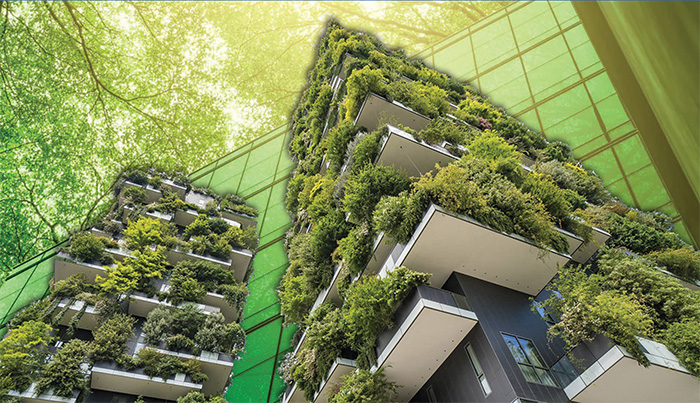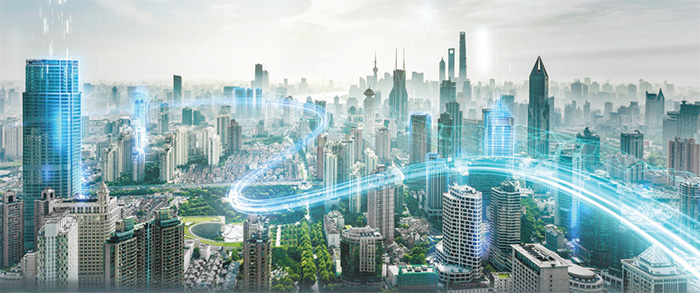Tech Developers Must Collaborate To Unlock The Green Potential Of Smart Buildings

The promise of smart tech to make buildings more efficient is enormous, but progress is being hampered by a lack of big-picture thinking from software suppliers, writes Jonathan Williams, branch sales manager – smart buildings, at Siemens.
Smart buildings are ushering in a facilities management revolution.
They offer a real-time, all-encompassing view of a building’s operations, unlocking an unprecedented degree of visibility, control, and automation of key systems within properties and across whole estates.
As property owners and occupants come under increasing pressure to make sustainability gains and cut operational costs, demand to upgrade them to make their systems smarter has is accelerating.
This is clear from recent Crane Surveys from Deloitte, which report record numbers of refurbishment projects taking place in London.
Unfortunately, the facilities management industry finds itself in a maze of multiple, disparate smart technologies and is looking for guidance and advice to enable an end-to-end solution that will deliver a smart connected building.
The Next Level Of Automation

As anyone with experience in facilities management will know that just a decade ago, they had to find ways to remind staff to lower thermostats and switch off lights and equipment.
Today, automated systems that use sensors to detect when lights and heating are needed have become so widespread that the responsibility has been largely taken out of the hands of building users. The result is energy savings measures operating more reliably, helping to reduce wasted energy.
But much greater gains remain to be made.
This much is evident from a piece of research in 2020*. It found that average building energy consumption dropped by just 16 per cent during Covid lockdowns, despite the fact that they were largely standing empty. This proved that most buildings’ energy-consuming systems were unable to respond quickly to occupancy levels, either automatically or by manual control.
This ability to adapt is what true smart building technology introduces.
An effective system monitors every factor determining the conditions inside the building, including the number and location of occupants on the premises and interior and exterior climatic conditions and light levels, so that lighting, HVAC and solar control systems can constantly adapt.
Smarter energy management is another key piece of the puzzle, and true smart buildings use a combination of on-site renewable generation and battery storage to adapt to the terms of supplier tariffs and ensure that any power purchased from the grid is obtained at the best possible rates.
Taken together, these capabilities can generate energy savings of between 20-30 per cent.
But, in spite of the clear benefits, in 2023 just one in 20 UK commercial buildings can genuinely be called ‘smart’.
Part of the reason for this lies in the inherent challenge of upgrading existing buildings, and the complexities involved in convincing property owners of the benefits of investing in smart tech.
Another key barrier, however, is the mind-set of the tech developers that supply smart building tech.
Working Together For Shared Benefits

Currently, it’s a much too common occurrence that a team managing a building’s operations will become restricted by the limitations of one company’s smart building ecosystem. This can severely reduce their freedom of choice when it comes to integrating new, expanded or alternative systems.
Given the complexity of controlling building management systems in a harmonious way, no individual company will ever be able to deliver a suite of hardware and software that covers every need. This issue is amplified by the fact that new tech will often need to integrate with existing systems.
In order to achieve a truly smart building there has to be one supplier acting as 'master integrator' to ensure interoperability and building performance across these multi tech systems. This is particularly true when retrofitting across legacy systems. Plus, it's about delivering the end-to-end solution that the property sector is trying to get to.
There is an urgent need for a change of perspective among smart building tech developers, placing collaboration, shared goals, and the needs of users at the heart of the strategy, right across the industry.
This mindset shift is often known as transitioning from competitive thinking to co-petitive. In other words, acknowledging that a far greater prize – that of widespread adoption – is attainable by working together rather than in company silos.
This is the only way that the tech industry will be able to give facilities managers the solutions they need to tackle the complex challenge of making buildings more efficient without compromising on occupant experience.
* https://workplaceinsight.net/carbon-emissions-from-buildings-fall-but-more-to-be-done/
Click the article to enlarge it.


























































